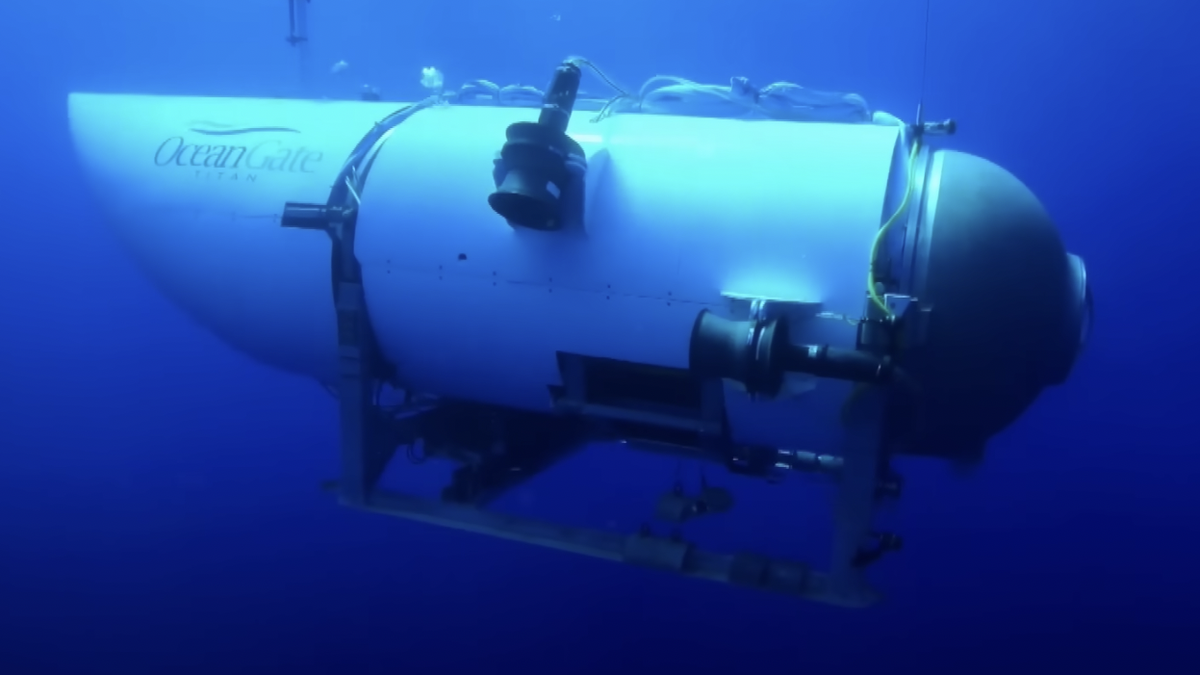It's Not a Submarine (and Why It's Driven With a Video Game Controller)
Right now, five people are possibly trapped in a private submersible somewhere in the Atlantic Ocean. They have less than 20 hours of air left as of this writing—assuming they’re still alive. The U.S. Coast Guard, Navy, and Canada’s...

Right now, five people are possibly trapped in a private submersible somewhere in the Atlantic Ocean. They have less than 20 hours of air left as of this writing—assuming they’re still alive. The U.S. Coast Guard, Navy, and Canada’s military are in the midst of a large-scale effort to locate and retrieve the vessel, dubbed the Titan. Despite the recent revelation that the sound of “banging” was detected by powerful underwater microphones near the area the submersible went missing, things aren’t looking good.
On June 18, the 21-foot-long submersible embarked on a mission to survey the wreck of The Titanic, located 12,500 feet below the ocean’s surface and about 435 miles south of St. John’s in Newfoundland, with four passengers and a pilot onboard. About an hour and 45 minutes into the dive, communication between the submersible and its mothership Polar Prince ceased.
According to the waiver signed by Titan passengers, the submersible is an “experimental vessel” that has not been “approved or certified by any regulatory body.”
Who is onboard the missing submersible?
The Titan is owned by a company called Oceangate Expeditions, and its passengers include four tourists (who paid up to $250,000 each for the ride), and the owner of the Oceangate Expeditions. The missing adventurers are:
Hamish Harding, a British businessman and explorer who has been called a “living legend of aviation.”Shahzada Dawood, a Pakistani businessman.Suleman Dawood, Shahzada Dawood’s son.Paul-Henri Nargeolet, a 77-year-old French explorer, and director of underwater research at a company that owns the rights to the Titanic wreck.Stockton Rush, OceanGate, Inc.’s CEO and founder.The difference between a submersible and a submarine
The Titan is a submersible. Unlike a submarine, a submersible is launched from a larger ship and later hauled back in. While some submarines can safely remain underwater for months and travel thousands of miles under their own power without surfacing, the Titan only has enough power for short trips—the voyage to the Titanic takes about 8 hours—so it’s more like an untethered diving bell than an actual submarine.
Navigating the Titan relies on a text-messaging system wherein the mothership basically tells the Titan’s pilot how to steer. There is no GPS or other location system onboard.
What went wrong?
There is no way of telling exactly what caused the vessel to stop communicating with the outside world, nor to precisely pinpoint where it is now. But there are three plausible scenarios:
The submarine is currently floating on top of the ocean. The Titan is equipped with ballast mechanisms that allow it to rise to the surface even if it loses power. This is probably the best-case-scenario, but it’s still grim: There is no way to open the submersible from the inside—it’s bolted shut— so the occupants will run out of air if they are not found within the next day. Canadian and American military planes have so far canvassed an area of ocean the size of the state of Connecticut looking for the craft, but the sea is vast, and foggy conditions have made the search even more difficult. The Titan is intact, but unable to return to the surface. If the ballast mechanism failed, or the Titan is trapped by debris (maybe of the Titanic itself) it could be stranded deep beneath the ocean. In this case, even if it is located, rescuing the crew would present an unprecedented challenge. There are very few vessels capable of diving as deep as the Titan, and hauling it back to the surface would be a massive logistical problem.There was a hull breach or other catastrophic structural failure. If this happened, the submersible would’ve been immediately crushed, leaving no survivors.According to David Marquet, a retired U.S. Navy submarine captain, the chances of the crew surviving at all is about 1%. “It’s basically imagining a spacecraft disappeared on the far side of the moon,” Marquet told NPR. “A, you have to find it. B, you have to get to it. Even when you get to it...you still need to somehow get the people out of there to safety.”
Do they really pilot the submersible with a video game controller?
Despite the quarter-million-dollar price of an eight-day expedition with Oceangate, the Titan is far from a luxury vessel. The interior is about the size of a minivan’s, and passengers don’t have room to stand up within the craft.
David Pogue, a reporter for CBS Sunday Morning, embarked on a mission with Oceangate last year, and reported on the DIY-style of some of the Titan’s components. The lights are from a camping store. The toilet is a plastic bottle. The craft is controlled by a modified $30 Logitech F710 game controller. But using a game controller to control submarines isn’t uncommon; the military has been doing it for year, and as Oceangate owner Rush told Pogue on CBS Sunday Morning, the interior lights, toilet, and gamepad might be makeshift, but the important parts of the vehicle are not.
“There are certain things you want to be buttoned down. The pressure vessel is not MacGyver at all,” said Rush in an interview with Sunday Morning, “That’s where we worked with Boeing, NASA, and the University of Washington. Everything else can fail—your thrusters can go, your lights can go—and you’re still going to be safe.” Depends on how you define the word, I suppose, but let’s hope so.
A successful deep undersea rescue operation is possible—but unlikely
To give an idea of how difficult retrieving the Titan would be, consider the successful rescue of the submersible Pisces III. In 1973, Roger Mallinson and Roger Chapman were laying ocean floor cable off the coast of Ireland when the hull of their submersible was breached. A compartment filled with water, the cable attaching the Pisces III to its mothership snapped, and the craft sank to a depth of 1,575 ft below sea level before coming to rest on the ocean floor.
Even though the Pisces III was was in much shallower water (the Titan may be as deep as 12,000 feet) and there was no mystery about its location, the frantic rescue operation still took 84 hours. Both Mallinson and Chapman survived, but just barely—by the time they were extracted from their submersible, they had an estimated 12 minutes of breathable air left.

 Hollif
Hollif 































